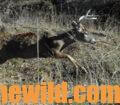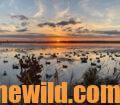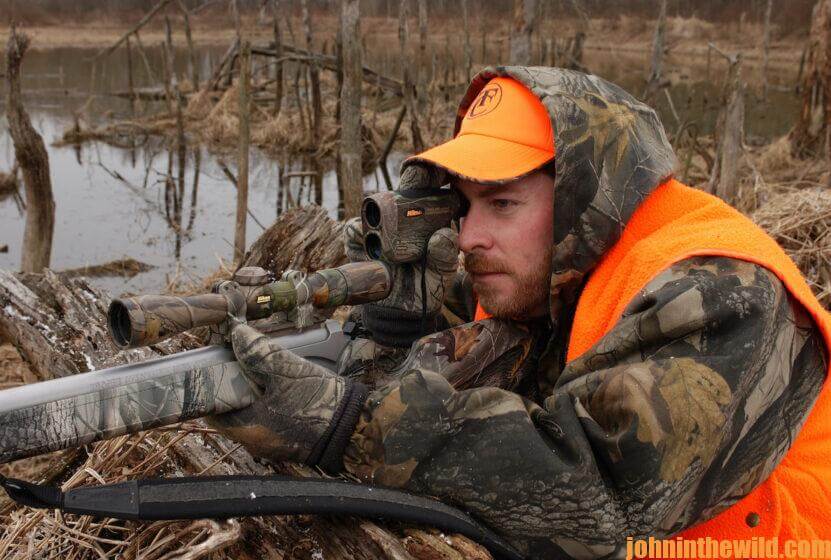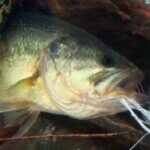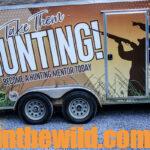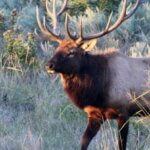Editor’s Note: You can’t bag a buck if you don’t see the animal. The key to seeing more bucks on every hunt is knowing how to choose the most-productive stand sites. Many hunters choose their stand sites using too little information. This week we’ll learn how to identify stands for next year’s deer season, or, if deer season where you hunt hasn’t ended, we’ll tell about stands you can select between now and February 10th, the end date for some deer seasons around the U.S.
 To bag a big buck, you must be in a place where the deer least expect to see you at a time of day when the buck doesn’t anticipate encountering a hunter. Most of us don’t hunt out in the water because we’re more interested in keeping our feet dry and hunting deer with the least-possible amount of hassle. However, to take an older, bigger buck, you must be willing to work for him. To determine where an exceptional tree stand site is, study the area you hunt. Search for spots where no one will want to put a tree stand. Learn how to reach that place without being seen, and how to leave without disturbing any evidence to let others know you’ve been in the region. I particularly like a tree-stand site over water in river-bottom drainages.
To bag a big buck, you must be in a place where the deer least expect to see you at a time of day when the buck doesn’t anticipate encountering a hunter. Most of us don’t hunt out in the water because we’re more interested in keeping our feet dry and hunting deer with the least-possible amount of hassle. However, to take an older, bigger buck, you must be willing to work for him. To determine where an exceptional tree stand site is, study the area you hunt. Search for spots where no one will want to put a tree stand. Learn how to reach that place without being seen, and how to leave without disturbing any evidence to let others know you’ve been in the region. I particularly like a tree-stand site over water in river-bottom drainages.
Two different methods will aid you in getting to a water stand – you can buddy-hunt with a small boat, or you can wear waders. If an oxbow lake, a beaver pond or a backwater slough is close to where you’re hunting, use some type of portable boat or canoe to get you and your partner’s tree stands to the places to set them up. Paddle to a tree standing out in the water. Have your hunting friend lock on his tree stand, climb the tree and attach his safety belt once he’s up the tree. Then, you paddle to the second stand site, pull the boat onshore, hide the boat under brush or bushes and wade out to your tree stand site – wearing either hip or thigh-high waders and carrying your tree stand. After the hunt’s over and you come out of your stand, retrieve the boat, and pick up the other hunter.
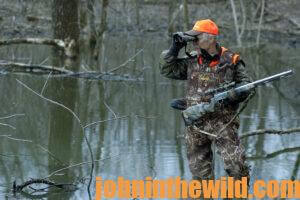
By using this strategy, you:
• leave no scent in the area you plan to hunt;
• can watch the water’s edge, which most often is a natural deer-migration route – especially if acorns are floating on the edge of the water;
• will surprise the deer, since they don’t expect to see hunters in trees over water;
• will find that other hunters coming to hunt that region often will drive deer to you, if they come by land; and
• can unload any deer you bag into the boat or canoe and transport it out easily to your vehicle.
Even if you don’t have access to a portable boat or a small canoe, you can wear hip or chest waders to move out into the water well away from the bank and place your tree stand to hunt. One of my favorite stands to hunt in a beaver swamp late in the season is in flooded timber. These regions will be full of white oak and red oak acorns. When the rains come in late December and January, and the beaver ponds overflow their banks, the acorns that have been on the forest floor will float to the surface.
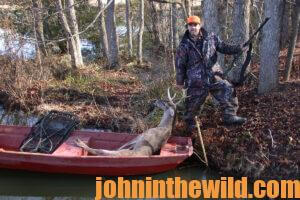
One morning I’d reached my stand before first light and was in my tree stand about an hour before there was enough light to shoot. In the stillness of the morning, I heard wood ducks whistling through the trees and splashing in the beaver slough as they landed. I also heard the noisy quacking of mallard ducks dropping into the standing timber and feeding on the floating acorns. As the light increased, dripping water and popping nuts were the loudest sounds in the area. Using my binoculars, I looked for the deer. Searching through the mist rising from the swamp, I spotted four does, knee-deep in the water, feeding on the acorns. Behind the does, I saw another deer with its head behind a big cypress tree.
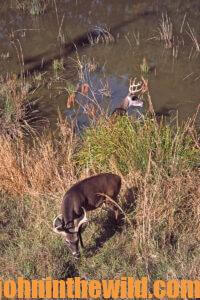
Then when a wood duck flew into the swamp like a World War II fighter pilot and splashed not 20 yards from the deer standing near the cypress, the animal jerked its head back. I spotted a flash of ivory. I studied the buck through my binoculars. Although he only was a 6 point, his antlers were wide and heavy. Because a breeze blew from the shore out across the beaver pond, I knew the deer couldn’t smell me. I waited for a better shot. Once the second wood duck flew in and landed in the same area as the first wood duck, the 6-pointer backed away from the cypress tree and fed down the slough toward me. The buck stopped between two sweet gum trees and presented a front shoulder shot. As my crosshairs found the spot I was searching for, I squeezed the trigger. At the explosion of the rifle, ducks took to the air, and does splashed down the slough. However, the 6-point was in the water where he last had stood. That same water stand produced bucks for me six out of the eight years I hunted that property. I never saw another hunter in that part of the woods.
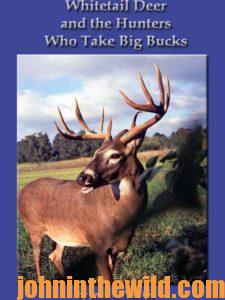 Tree-stand placement is critical to whitetail success. Once you learn to carefully scout after studying topo maps, aerial photos and trail cameras, discard the obvious, quit thinking like other hunters and determine what a deer will do before he does it. You’ll be much-more consistent in placing your stand at a spot where you can see and take a buck.
Tree-stand placement is critical to whitetail success. Once you learn to carefully scout after studying topo maps, aerial photos and trail cameras, discard the obvious, quit thinking like other hunters and determine what a deer will do before he does it. You’ll be much-more consistent in placing your stand at a spot where you can see and take a buck.
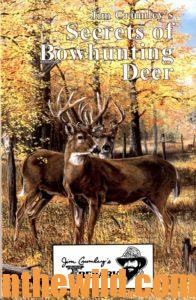 To learn more about hunting deer, check out John E. Phillips’ book, “Whitetail Deer and the Hunters Who Take Big Bucks,” available in Kindle, print and Audible at http://amzn.to/2bYwYOK. You may have to copy and paste this link into your browser. (When you click on this book, notice on the left where Amazon says you can read 10% of this book for free and hear 10% for free). On the right side of the page and below the offer for a free Audible trial, you can click on Buy the Audible book. To learn even more about hunting for deer, check out John E. Phillips’ “Jim Crumley’s Secrets of Bowhunting Deer,” now available as of January 1, 2022, in Audible, as well as paperback and Kindle at https://www.amazon.com/.
To learn more about hunting deer, check out John E. Phillips’ book, “Whitetail Deer and the Hunters Who Take Big Bucks,” available in Kindle, print and Audible at http://amzn.to/2bYwYOK. You may have to copy and paste this link into your browser. (When you click on this book, notice on the left where Amazon says you can read 10% of this book for free and hear 10% for free). On the right side of the page and below the offer for a free Audible trial, you can click on Buy the Audible book. To learn even more about hunting for deer, check out John E. Phillips’ “Jim Crumley’s Secrets of Bowhunting Deer,” now available as of January 1, 2022, in Audible, as well as paperback and Kindle at https://www.amazon.com/.
 On the right side of the page and below the offer for a free Audible trial, you can click on Buy the Audible book. Also John and Denise Phillips’ new book in print December, 2021, “The Recipes You Can’t Live Without,” that’s full of delicious, time-tested recipes for cooking wild game and fish and also ideas for breakfasts at your hunting club is available at https://www.amazon.com/.
On the right side of the page and below the offer for a free Audible trial, you can click on Buy the Audible book. Also John and Denise Phillips’ new book in print December, 2021, “The Recipes You Can’t Live Without,” that’s full of delicious, time-tested recipes for cooking wild game and fish and also ideas for breakfasts at your hunting club is available at https://www.amazon.com/.

